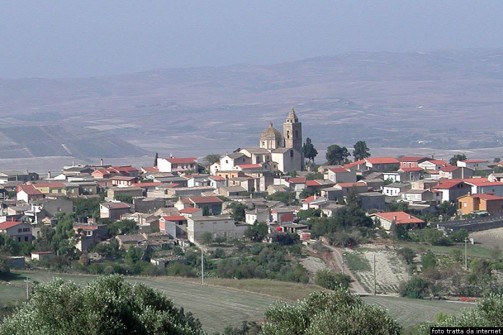Villanovafranca (altitude 260 meters above sea level) is a small town of about 1,500 inhabitants located in south-central Sardinia’s Medio Campidano region.
Lying in a dominant position on the characteristic rounded hills of upper Marmilla, bordering Trexenta, the town boasts in its territory the presence of numerous settlements and archaeological sites mainly referable to the Proto-Nuragic and Nuragic periods.
The most important of these is definitely the nuraghe “Su Mulinu” (16th century B.C.-11th century A.D.). Still under study and excavation, it has returned a valuable and unique relic: a Nuragic sacrificial altar with a local sandstone basin, found inside compartment E, chronologically referable to the 8th century BC. The altar is of enormous importance in the study of the controversial use of nuraghi. The megalithic monument, with its complex shape, stands out to scholars’ attention mainly as a compendium of the development of Nuragic building techniques from the most archaic forms, aggittanti with flatbanded corridors, to the tholos. The monument can be partially visited, with guide service by appointment. Also mentioned are the nuraghi of Tuppedili, Baracca Dragonis, Trattasi, Perdu Atzeni, Riu Stangiu, Ruinali sa figu, Pranu sa feurra, Salamai, Paberi, Pranu, and others. The economy of the village is purely agricultural-pastoral. Of particular importance are the production of durum wheat and the cultivation of olive, grapevine, almond tree and the prized saffron to which the PDO mark has been awarded. Renowned sweets made with almond paste. Lately, the economy has been diversifying involving the agritourism, bed & breakfast, local product enhancement and cultural tourism sectors. Of particular value and pride to the townspeople is the existence of the “Civic Archaeological Museum Su Mulinu,” with an adjoining restoration workshop, which collects the most significant artifacts found in the municipal area and particularly in the nuragic zone of “Su Mulinu.” Inside the museum, in addition to the life-size reproduction of the Nuragic sacrificial altar, there is also a tactile path for the blind. Another reality source of special interest to visitors is the “San Lorenzo go-kart track.” With its more than one-kilometer track, the longest in Sardinia, which is also homologated for national and international competitions, it is a strong attraction for sports enthusiasts and fans of motorsports, formula karting in particular. Still in the pipeline, but nevertheless in an advanced state of construction, are the “Su Mulinu Archaeological Park” area, horse riding facilities, and skeet shooting sports facilities with adjoining hunting course.


